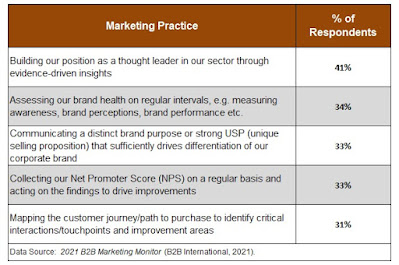For the past several years, industry analysts and other thought leaders have been urging marketing and sales professionals to shift from selling to helping buyers buy. Advocates of this change argue that it will enable marketers and salespeople to better align with the decision-making needs of potential buyers and create more meaningful and trusting relationships.
The problem is, the helping buyers buy approach doesn't go quite far enough. As Tony Zambito, the founder of Buyer Persona, noted in a recent blog post, "If content and sales conversations are about helping to buy, then a mindset towards selling only can still exist. And it can be clear to buyers that you and your team are selling. That you want to help them buy your products, solutions, and services."
Tony suggests that a better approach for marketers and salespeople to adopt is: "Helping buyers to accomplish future goals and meet future challenges." He argues that this approach will better align them with where many prospective buyers actually are in their decision-making process. Once marketers and salespeople have helped potential buyers "figure things out," they can then move to helping those potential customers to buy.
Helping buyers accomplish future goals and meet future challenges is the right first approach to use when engaging with a potential customer, but it will only be effective if the prospect's buying team believe the information and advice the prospective vendor provides is accurate and, more importantly, unbiased. Only then will potential buyers trust the information and advice enough to confidently rely on it to support their decisions.
The Importance of Decision Confidence
In an earlier post, I discussed the importance of helping potential buyers develop confidence in their decision-making process. Research by Gartner has found that decision confidence increases the likelihood of a positive decision relating to a "new" purchase by 2.6 times.
The best way for marketing and sales professionals to help potential buyers develop decision confidence is to provide accurate and objective information that will help decision makers make the most appropriate choices for their organization. And this can mean providing information or advice that might lead a buying team to decide not to purchase your product or service.
At this point, you may ask: "Why would we want to provide information or advice that could lead a prospective customer not to do business with us?" The answer, of course, is that you don't want this circumstance to arise very often. And the best way to avoid being in this situation is to make wise choices about which prospective customers to work with.
Choose the Right Customers
Customer selection is a vital issue for both business strategy and marketing/sales strategy. In Playing to Win: How Strategy Really Works, Roger L. Martin, a Professor Emeritus at the Rotman School of Management, and A.G. Lafley, the former Chairman and CEO of Proctor & Gamble, described a five-point framework for designing an effective business strategy. Martin and Lafley described their framework in the form of five basic questions. While all these questions are important, the two most critical in strategy formulation are:
- Where will we play? - In which markets, with which types of customers, in which channels, in which product categories, and at which vertical stage or stages of the industry will we compete?
- How will we win? - How will we succeed in our defined field of play?









